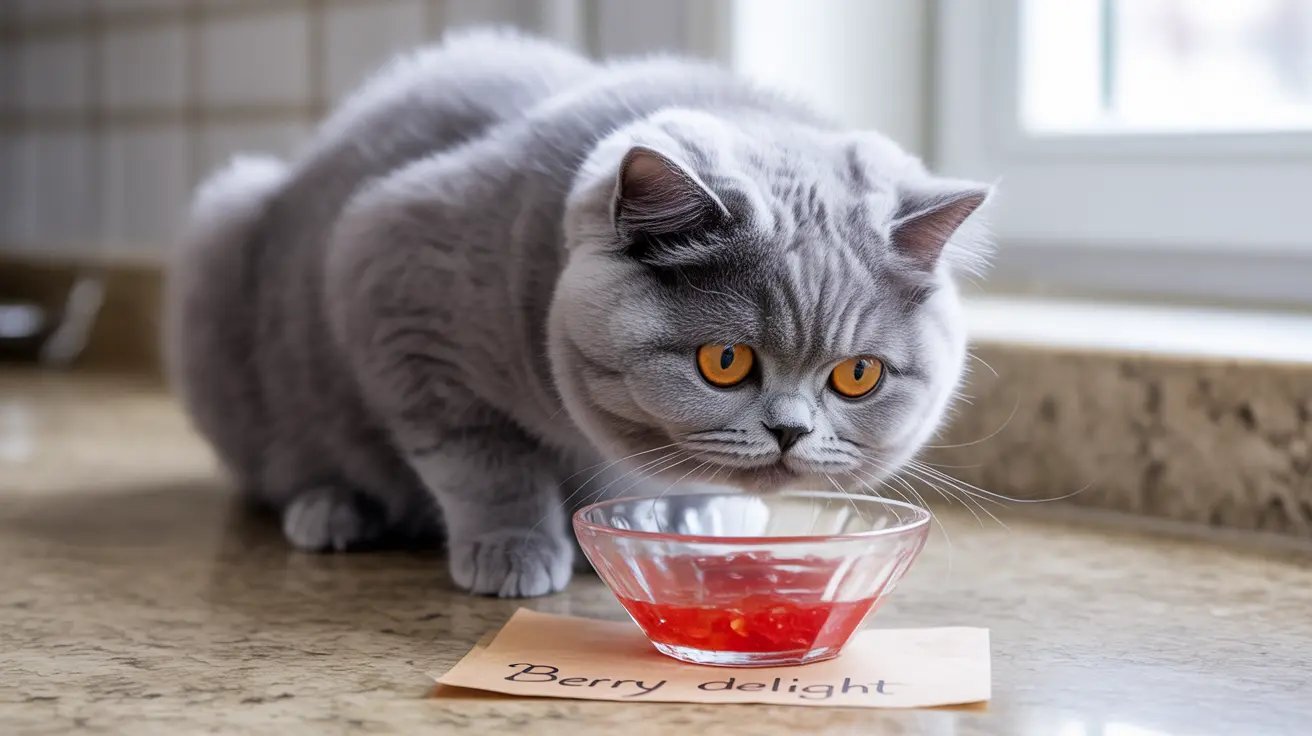Understanding Cats' Dietary Needs
Cats are obligate carnivores, meaning they require a diet primarily consisting of meat to thrive. Their digestive systems are specifically designed to process animal protein and fat, not sugary substances like jelly.
Unlike humans and some other pets, cats lack the ability to taste sweetness. This is due to a genetic mutation that affects their taste receptors, making sugary treats like jelly nutritionally unnecessary and potentially harmful.
The Risks of Feeding Jelly to Cats
Sugar Content Concerns
Commercial jellies are packed with sugar, which can lead to several health issues in cats:
- Obesity
- Diabetes
- Dental problems
- Digestive upset
- Long-term metabolic issues
Dangerous Ingredients
Some jellies contain ingredients that are toxic to cats:
- Grape jelly (grapes and raisins can cause kidney failure)
- Artificial sweeteners, especially xylitol
- Preservatives and artificial additives
- Citrus-based ingredients
Safe Alternatives to Jelly
Instead of offering your cat jelly, consider these healthy alternatives:
- Commercial cat treats formulated for feline nutrition
- Small pieces of cooked, plain meat
- Cat-specific wet food with gravy or jelly-style sauce
- Fresh, clean water for hydration
When to Contact Your Veterinarian
Seek immediate veterinary care if your cat has consumed:
- Any amount of grape jelly
- Jelly containing xylitol
- Large quantities of regular jelly
- Jelly and shows signs of distress or illness
Frequently Asked Questions
Can cats safely eat jelly or jam, and which flavors should be avoided?
While small amounts of plain, non-grape jelly aren't immediately toxic, it's best to avoid feeding jelly to cats altogether. Grape jelly is strictly forbidden as it can cause kidney failure. Any jelly containing xylitol or artificial sweeteners should also be avoided.
What health risks can result from a cat eating jelly regularly?
Regular jelly consumption can lead to obesity, diabetes, dental problems, and digestive issues in cats. The high sugar content and lack of nutritional value make it an inappropriate treat for felines.
Why is jelly not nutritious or suitable for a cat's diet as an obligate carnivore?
Cats require a meat-based diet rich in protein and specific amino acids. Jelly provides no nutritional value and contains sugars and carbohydrates that cats' bodies aren't designed to process effectively.
What should I do if my cat accidentally eats jelly containing toxic ingredients like xylitol or grapes?
Contact your veterinarian immediately. These ingredients can be life-threatening to cats. Don't wait for symptoms to appear, as prompt treatment is crucial for the best outcome.
Why do some cats only lick the jelly or gravy from their wet food and avoid the meat chunks?
This behavior is often related to texture preference rather than nutritional choice. While the jelly in cat food is specially formulated to be nutritionally appropriate, cats should be encouraged to eat the meat portions for complete nutrition.
Conclusion
While cats might show interest in jelly, it's best to keep this sugary treat away from your feline friend. Focus instead on providing species-appropriate food and treats that support their carnivorous dietary needs. If your cat has consumed jelly, especially varieties containing toxic ingredients, don't hesitate to contact your veterinarian for guidance.






